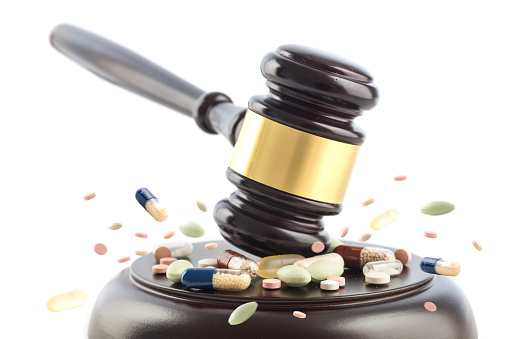Content Sections
By Rob Verkerk PhD
Executive and scientific director, ANH-Intl and ANH-USA
In a world in which humans are pumping ever greater amounts of new-to-nature chemicals into the environment, we’re asking a lot from our detoxification systems. Your kidneys, and your liver in particular, do a lot of the heavy lifting. But there’s a lot happening in our bloodstreams and within every cell of our bodies too, particularly in undoing the damage that toxins and associated free radicals can do as they circulate around our system before they are turned into less toxic, or sometimes even, more toxic, metabolites, or they’re excreted, or stored in body fat.
As humans, we’ve got two main ways of addressing this problem.
We can reduce the output of chemicals into the environment and into our bodies by affecting both the supply/production and demand (= difficult, but EU regulators are trying to do this by regulating industrial chemicals via the REACH program).
Or we can help our bodies handle the toxic burden better, accelerating the rate by which toxic compounds are metabolised and got rid of in our pee or poop (= easy, but an approach that’s almost entirely ignored by health authorities and the medical profession).
Such is the seriousness of the problem of the growing toxic burden, one that contributes to many of the cancers and a substantial amount of the heart, neurodegenerative, and other diseases that plague society today, we argue we should deploy both strategies together as best we can.
PFAS – by example
Take so-called ‘forever chemicals’ known more scientifically as per- and polyfluoroalkyl substances (PFASs) by example. They represent a very large group of thousands (up to 6 million) of highly persistent organofluorine products. They are therefore a key group of ‘persistent organic pollutants’ or POPs and exposure has been linked to increased risk of dyslipidemia (abnormally high cholesterol), immune suppression (antibody response), reduced infant and foetal growth, and higher rates of kidney cancer. Our US team is involved in a detailed study on PFAS which will be released soon. The EU lawmakers are on the case with PFAS bans – and a group of corporates, through the ChemSec movement, have realised they need to get behind this if their ESR (Environmental Social Responsibility) profile is to stay shiny and bright.
But how do you feel about the fact that the very substances we need to help us detoxify chemicals, or reduce the effects of oxidative stress caused by their exposure, are being targeted by regulators?
Either the left hand of society doesn’t know what the right is doing. Or there’s something more sinister going on. It’s a difficult topic to acquire hard evidence on, but we feel it’s likely that at different levels of decision making in the towers of political power, there’s probably some of both going on.

Two detox goldies
Other than a really good diet, with plenty of antioxidants, vitamins and minerals, along the lines of our RESET EATING approach, there are two natural products available as food supplements that we think are fast becoming essential to a healthy daily regime. One is N-acetyl cysteine or NAC, precursor of the body’s super-antioxidant, glutathione. The other is milk thistle, and it’s key active silymarin. Both have been targeted by regulators.
At ANH, we’ve been in the frontlines of battles to save both these supplements in Europe. In Germany, the BVL authority classifies milk thistle as a medicine. That’s because it has been shown through extensive research and trials to work wonders for detoxification, falling foul of the very broad scope of the definition of a drug in EU medicines law (Article 1(2)(b), Directive 2001/83/EC, as amended). Some companies, such as Schwabe Pharma, have managed successfully to get traditional herbal medicinal licenses for. However, ironically, some of these products are often less effective than food supplements that include greater amounts of standardised extracts (over 400 mg silymarin per daily dose).
But let’s now look a little closer at the other key player, NAC, a specific form of the ‘conditionally essential’ amino acid, cysteine.
NAC (for 'Nearly All Conditions')
Put simply – like so many natural products – NAC has multi-target, multi-system effects.
Here’s three very important functions:
- It’s a precursor to the body’s most important internal (endogenous) antioxidant, glutathione, so is ideally suited to combatting oxidative stress, a factor that’s linked to all chronic diseases, whether cancer, heart disease, diabetes, obesity, arthritis, Alzheimer’s, etc.
- It’s a powerful anti-inflammatory, and persistent systemic inflammation is a second factor that’s strongly related to all chronic diseases
- It’s got well studied immune-modulating characteristics. You got it. All chronic diseases are associated with some degree of immune dysregulation.
Sounds like the perfect supplement? In lots of ways it is. But it’s a pretty damn good drug too – and that’s it’s problem.
The functions of NAC are so fundamental that it’s one of the natural medicine tools that the mainstream medical sector couldn’t do without it. There has been, for example, nothing in the new-to-nature drug cabinet that can detoxify paracetamol (acetaminophen) better. It’s ability to calm immune hyper-responses in patients with chronic respiratory diseases has been known since the 1960s, and has been well researched in diseases such as COPD.
No wonder these properties made it an obvious potential candidate among those of us involved in the ‘early covid-19 natural treatment’ movement during the surges of 2020-2022.
You can check out some of the science, here and here.

Why is NAC in regulatory limbo?
The fact that NAC has undoubtedly had a long history of use as a drug means there is a desire to control it.
Some of the drug uses are given below:
- Acetaminophen toxicity – paracetamol overdose. Acetaminophen toxicity. First used as a drug around 1963 for this purpose.
- Alzheimer’s disease – lipoic acid (LA) and NAC decreased levels of oxidative and apoptotic markers via protection of mitochondrial function
- Asthma – antioxidant + anti-inflammatory
- Autism – Taking N-acetyl cysteine by mouth might improve irritability in children and adolescents with autism
- Breast cancer – stops cancer cells multiplying
- Bronchiectasis – mucolytic action
- Bronchitis – Taking N-acetyl cysteine by mouth seems to reduce shortness of breath and coughing
- Bronchopulmonary dysplasia (newborn babies) – Administering NAC to mothers through IV reduced neonate mortality
- Cannabis use disorder – Promotes abstinence, medication adherence and reducing cannabis use and craving among cannabis dependent users
- Chest pain (angina) – Taking N-acetyl cysteine by mouth or by IV seems to improve chest pain when used with the drug nitroglycerin. Taking N-acetyl cysteine by IV also seems to help prevent nitroglycerin tolerance, but it might increase the risk for headaches and low blood pressure
- Chronic bronchitis – anti-inflammatory and antioxidant
- Chronic obstructive pulmonary disease (COPD)
- Common cold (see Influenza)
- Complete or partial lung collapse (atelectasis) – Inhaling a prescription form of N-acetyl cysteine helps treat collapsed lungs caused by mucus blockage.
- Contrast-induced nephropathy (kidney damaged caused by contrast dye) – Taking N-acetyl cysteine by mouth, with or without other drugs, might help to prevent kidney problems caused by dyes used during some X-ray exams
- Cystic fibrosis – improves lung function
- Dry eye – mucolytic action

- Heart damage caused by cancer drug doxorubicin – Possibly reduces side effects (rat study) of doxorubicin. Science is conflicted
- Helicobacter pylori (the bacteria that causes stomach ulcers) – Helps to disrupt biofilms
- Hemodialysis – reduction of homocysteine
- High levels of cholesterol or other fats (lipids) in the blood (hyperlipidemia) – NAC reduces total cholesterol and LD cholesterol (mouse study)
- High levels of homocysteine in the blood (hyperhomocysteinemia) – Taking N-acetyl cysteine by mouth reduces homocysteine levels and blood pressure
- Hyperinsulinemia – improves insulin sensitivity
- Improves muscle performance – antioxidant
- Influenza
- Interstitial lung diseases such as idiopathic pulmonary fibrosis (IPF), bronchiectasis and influenza. (Review).
- IVF – Improved ovulation
- Liver cancer – enhancer of glutathione biosynthesis. NAC blocks damage to DNA
- Lou Gehrig's disease (amyotrophic lateral sclerosis or ALS) – Possibly prolongs survival and delays onset of motor impairment (mouse study)
- Low blood pressure – Effective in reducing blood pressure
- Lung cancer – chemoprotective. Inhibition of mutagenicity due to it antioxidant capabilities
- Lung tests – Inhaling a prescription form of N-acetyl cysteine is helpful to prepare people for diagnostic lung tests. Prescription products must be given by a healthcare provider.
- Parkinson’s disease – Enhancement of brain level of glutathione, ii. Reduction of oxidative damage-markers, iii. Enhancement of brain synaptic and non-synaptic brain mitochondrial complex I activities, and iv. Protection against dopamine-induced cell death
- Polycystic ovary syndrome – antioxidant. Mucolytic + improves insulin sensitivity
- Premature birth and recurrent pregnancy loss – anti-inflammatory, NAC + folic acid improved survival rate of foetus
- Toxicity in people taking the cancer drug ifosfamide (Ifex). Helps to prevent side effects of the cancer drug ifosfamide
- Ulcerative colitis – anti-inflammatory and antioxidant
- Viral hepatitis – May help to improve intrahepatic cholestasis and coagulation dysfunction
- Viral infections – helps prevent viruses and bacteria from adhering to the lining of the lungs, reduces excess airway mucus, lowers inflammation, supports pulmonary function and inhibits infectious colonization
Oh yes, it’s also a well known antidote for alcohol toxicity – better known as a hangover cure. That’s the very issue that caught the attention of the US Food and Drug Administration (FDA) a few years back. The FDA then called for information to be sent in by ‘interested parties’ as to whether it had evidence of sale before the US laws on dietary supplements (Dietary Supplements and Health Education Act [DSHEA]) were passed in 1994.
Just because a natural product fulfils the ridiculously wide definition of a drug (i.e. it can effectively treat disease), and it’s hard to prove who sold it first (drug companies or supplement companies), does that mean drug companies and drug regulators should control it, and remove it from the market in non-drug, supplement forms?
We say no. The regulators say yes.
Uncertainty - the prelude to bad, restrictive regulation
This is the nub of the argument. The drug companies and regulators argue that NAC was a drug before it can be proven it was used as a supplement, therefore the product should fall firmly within the remit of a drugs regime.
Additionally, it also conforms to the functional definition of a drug (yes, it can be used to treat disease), and the FDA doesn’t consider that it conforms to the dietary supplement definition under Federal Food, Drug and Cosmetic Act (FD&C Act). The FDA clearly categorises it as a ‘new drug'.
The trick used by regulators is to create a lot of legal uncertainty – it stops dietary supplement manufacturers getting too carried away, as they might if they knew a product was in a safe regulatory regime. Instead of an outright ban – think of it more as system that puts the brakes on the market for the product. They’re playing the same game with CBD supplements now too, a mechanism to rein in the spectacular growth in the supplement sector that started a few years back.
Supplement companies wanting to sell NAC get left with guidance and recommendations from the FDA that reminds them of NAC’s uncertain, limbo status. Not something you want to base your business plan on.
As it’s so hard to prove that it was sold as a dietary supplement before 15 October 1994, the US borderline between ‘old’ (grandfathered) and a notifiable ‘new’ dietary ingredients, the FDA likes to claim it can’t be designated as a dietary ingredient.
How many companies retain records for 20 years or more? Accounting practice doesn’t require it, and between then and now there’s been a huge transition from paper to digital records. Records of sales invoices and receipts, which will almost certainly, prior to 1994, have been hard copies, the only really persuasive evidence, will almost certainly have been destroyed in the transition to digital record keeping.
The European Union has a similar trick up its sleeve. It’s called the Novel Food Regulation (now Regulation 2015/2283, as amended). The original Novel Food Regulation (258/97) was however passed on 15 May 1997. As a reminder as to just how joined up regulators either side of the pond can be – the legal requirement to notify the FDA prior to placing a potential ‘new dietary ingredient’ on the market in the US came into play just a few months after the EU Novel Food Regulation (codified as 21 CFR 190.6), in September 1997.
In the EU, the fact that NAC isn’t on the Novel Food Catalogue as a food supplement ingredient known to be consumed prior to May 1997 puts it at risk.
Like in America.
European uncertainty
A lot of EU countries are taking a very cautious approach to NAC as a supplement. Some are limiting its use, stopping from being too therapeutic (effective). Some have banned it in supplement form altogether.
Uncertainty is just the ticket if you want to get the HARMonisation brigade excited – that’s the pharma-based supplement industry that loves harmonising down to the lowest common denominator.
Sweden wanted to ban NAC a few yeas back, but our dealings with the Swedish authorities secured use of a paltry 100 mg a day. That means Swedish users need to consume more capsules to get real benefits, but it beat a ban.
In Germany, it’s classified as a prescription drug, being used 200 to 600 mg per day for acute coughs and colds.
In the Czech Republic, it’s entirely banned from food production, which includes supplements.
The uncertainty is like an infectious disease. It's spreading.
Singapore says it's a synthetic chemical developed for use in medicines. Australia's Therapeutic Goods Administration (TGA) says NAC must be restricted to topical use only in Listed Medicines, but can be used as an active ingredient for biologicals. It can also be used as an excipient ingredient either for Listed Medicines and Prescription Medicines.
It's not hard to see in which direction the regulators are going.
What about the form? Is it identical or similar to that in nature?
NAC is a very slightly nature altered (acetylated) form of the amino acid cysteine that occurs in protein-rich foods, like pork, beef, lamb, fish, lentils, eggs, etc. Being acetylated means it has an acetyl group bonded to it that is in turn is made up of a carbonyl and a methyl group.

This tiny alteration simply makes it more stable. It's de-acetylated in the body, converted back to cysteine and it's the cysteine that drives glutathione synthesis. This is the hallmark of a good dietary or food supplement. It’s stable in the bottle and used in the body just like the forms in nature – but often delivered at a higher dose or more consistently than can be achieved with foods. We say its form makes it a natural product. It’s also a very safe natural product, with decades long history of safe use behind it. That should suggest, in our view, that it should always be available as a supplement, regardless how much the drug companies want to control it.
The cure: grassroots and trade pressure
Regulators have a different view. That’s why they’re keeping it in uncertain, limbo land. Amazon even knee-jerked over it in the US last year and pulled all NAC supplements off its site to keep things cosy with the FDA. Such is the tie up between Big Corporate and drug regulators.
Watch this space. The FDA may have backed off for the time being but it’s done almost nothing to dispel the uncertainty. Regulatory limbo is a risky space for a supplement to hang out.
And history tells us that for these kinds of limbo supplements, grassroots responses – such as the advocacy initiated by our US team – in conjunction with intensive lobbying and petitions by trade associations, like the Natural Products Association and the Council for Responsible Nutrition, are the only medicines we know that are able to save invaluable supplements like NAC from the jaws of Big Pharma.
>>> ANH-USA articles on PFAS
>>> Feel free to republish - just follow our Alliance for Natural Health International Re-publishing Guidelines
>>> If you’re not already signed up for our weekly newsletter, sign up for free now using the SUBSCRIBE button at the top of our website – or better still – become a Pathfinder member and enjoy benefits unique to our members.
>>> Return to homepage








Comments
your voice counts
17 April 2023 at 11:48 am
Given that NAC can lower blood pressure, is it safe for someone with a diagnosis of Bradycardia to take it?
Your voice counts
We welcome your comments and are very interested in your point of view, but we ask that you keep them relevant to the article, that they be civil and without commercial links. All comments are moderated prior to being published. We reserve the right to edit or not publish comments that we consider abusive or offensive.
There is extra content here from a third party provider. You will be unable to see this content unless you agree to allow Content Cookies. Cookie Preferences